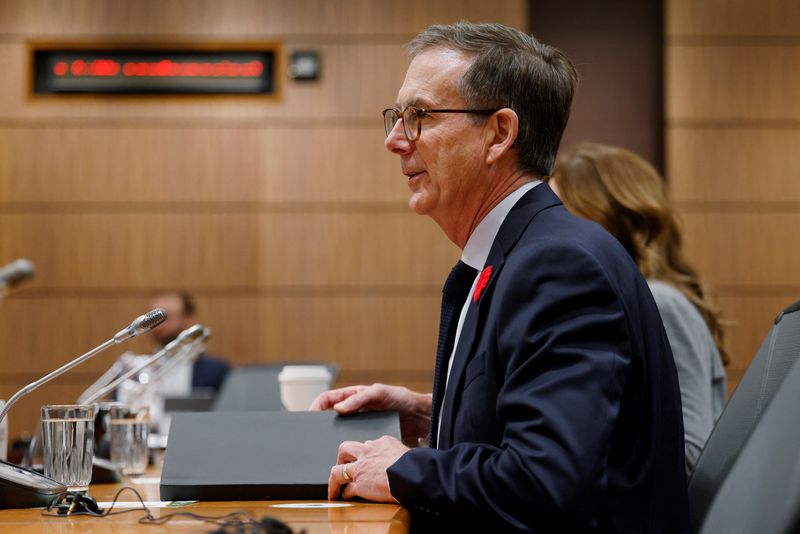OTTAWA, Nov 5 (Reuters) – The Bank of Canada’s governing council felt its key borrowing cost was not needed to be as restrictive ahead of its Oct. 23 decision to cut rates as it was confident that upside pressures on inflation would continue to decline, minutes showed on Tuesday.
The BoC slashed its key policy rate by 50 basis points to 3.75% last month, its fourth cut in a row and the first larger-than-usual move in more than four years, after declaring an almost victory over inflation.
The members of the rate-setting committee, however, discussed the merits of a 25 basis point cut but saw a strong consensus among them for the larger step, the summary of deliberations said.
“Governing Council members wanted to convey that a larger step was appropriate given the economic data seen since July,” it said.
There was concern among the members that many would construe the bigger rate cut as a sign of economic trouble, leading to expectations of further moves of this size or to assumptions that the policy interest rate would need to become very accommodative in the future.
“Members felt that a larger step was appropriate given the ongoing softness in the labor market and the need for stronger economic growth to absorb excess supply,” it said.
Inflation in Canada eased to 1.6% in September, falling below the bank’s mid-point of the 1% to 3% control range as over a 23-year high interest rate shrunk consumer prices.
But it has also throttled growth with the GDP stalling in August and expectations are that it would miss the BoC’s revised 1.5% target in the third quarter.
The central bank and economists feel the latest government’s efforts to curtail population growth would soften the GDP and consumption in the coming quarters.
“The slowing rate of population growth would act as a brake on total consumption growth,” the minutes said, adding it could slow in the near term even though reductions in interest rates would ultimately support stronger growth in consumption.
Prime Minister Justin Trudeau’s government announced measures last month which could lead to a population decline of 0.2% in both 2025 and 2026 before returning to a marginal growth in 2027.
The six-member committee also discussed the risk that lower interest rates, pent-up demand, and new rules for mortgage qualification could increase demand for housing and boost housing prices more than expected.
By Promit Mukherjee, editing by Dale Smith
(promit.mukherjee@thomsonreuters.com)

